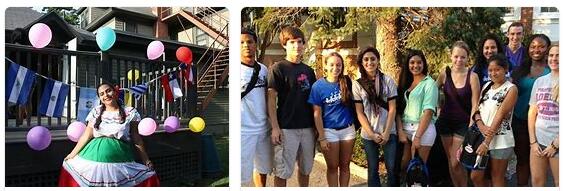TERRITORY: ENVIRONMENT
On the reliefs a luxuriant forest thickens with many precious essences, while in the lower and drier areas the savannah is widespread . The forest is home to remarkable flora and fauna. However, the massive cutting of trees, which has always been a source of wood for heating, for the increase of arable land, and more recently for commercial purposes, is causing serious deforestation. According to the ASEAN Bureau of Biodiversity and WWF, there are numerous endangered species while there are species unknown until very recently such as the saola (or ox Vu Qang), discovered only in 1992; in the Mekong River, which crosses the country from N to S, there is also a large number of fish fauna. Tiger, Asian elephant, red panda, are among the animals that still populate the country in addition to fish such as the barbel, the catfish, the barometer fish and the dolphin of the Irrawaddy; some of them are considered to be at risk of extinction. Protected areas cover 16.7% of the territory and include 22 national areas for biodiversity conservation, 5 conservation areas, 1 reserve for wetlands, 6 game reserves and 6 other protected areas. In particular, the government of Laos, together with those of Cambodia, Viet Nam and Thailand and with the support of some international organizations, is involved in a project for the conservation of biodiversity and the dissemination of sustainable development programs concerning the wetlands around the Mekong River.
CULTURE: GENERAL INFORMATION
The Laotian cultural identity is the result of a double process: on the one hand the traditions of the different ethnic groups have remained strong (Laos is the Southeast Asian nation that brings together the largest number, 68, of ethnic groups); on the other hand a strong leveling of the customs and practices of social life was brought about – not a new fact in the history of Asia – by Buddhism, which determined the physiognomy of the country, which still appears despite the radical transformations imposed mainly by the presence American. The history of art and literature is therefore largely attributable to the typical religious matrices of Indochina (even if the literary production preceding Buddhism is of a certain importance, centered on popular epic tales and on Indian narrative casts) and only in the contemporary age have external suggestions been accepted. Testimony is the choice by UNESCO to include in the world heritage the city of Louangphabang (1995) in which the splendor of religious art is maximum in temples, statues, shrines and libraries, and Vat Phou with the ancient settlements associated in the cultural landscape of Champasak (2001), an archaeological site considered a symbol and cradle of the Khmer civilization, whose prodromes were already visible in the creations of the principality of Chen-la, settled along the Mekong at the end of the 6th century. Visit harvardshoes.com for Laos travel plan.
Even the holidays, which alternate with a very high frequency during the year, reflect the different souls of the country, although in a certain sense constituting the main social glue horizontally, between different ethnic groups and religions, and vertically, between the various classes. social. The new millennium marked an important turning point in the policies of protection and enhancement of all the heritage of Laos, with the clear commitment on the part of the authorities to promote a real cultural policy, whose objectives must focus not only on the safeguarding of artistic and literary works. or architectural, but also and above all on preserving those intangible legacies, such as traditional dance, music or theater, which risk succumbing to the “invasion” of modernity. The numerous festivals, from religious to civil and institutional ones, in which the participation and involvement of the population are very high, together with the many temples spread throughout the country, remain the “strongholds” of tradition. Examples of the historical and cultural heritage, in addition to the aforementioned Louangphabang complex, are also, in the capital, the Museum of Wat Ho Phra Keo, with a large collection of Laotian and Khmer sacred art, and the Museum of the Laotian Revolution, centered on modern history and liberation. Vientiane is, ultimately, also the main driver of integration between foreign cultural influences and tradition. National institutes of art, music and dance are the favorite places where Laotian artists seek the synthesis between past and present. Among the most important painters of contemporary art are Kongphat Luangrath (b.1950), Khamsouk Keomingmuang (b.1942), in whose works scenes of rural life are privileged, Nirad Chounramany (b.1962) and Phet Cash (b. 1973), exponent of a modern abstractionism. Finally, in the field of cinema, the strict control put in place by the government throughout the twentieth century should be noted. Only attenuated at the end of the eighties of the twentieth century, the “political management” continued in the use of the cinematographic medium for documentary purposes, leaving little space for private initiatives, including the works of Vithoune Sundara (b. 1958), the only true director active in the country, who directed, among others, The Charming Forest (1997) and Wrongfulness (2004).
